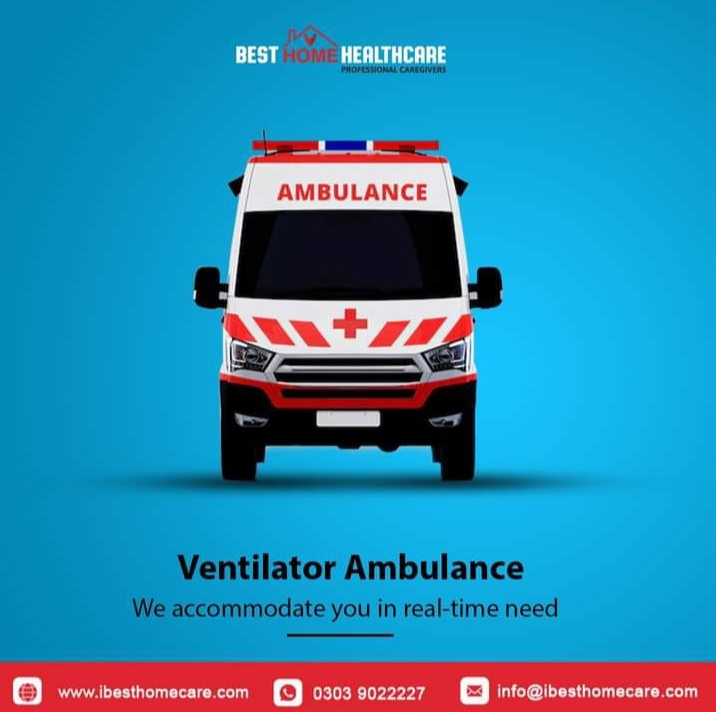Ventilator Ambulance
Every second counts in emergency medical care. Having a ventilated ambulance on hand can be extremely helpful for critically ill patients who immediately need mechanical respiratory support. Ensuring that life-saving treatment begins as soon as they are contacted, these specially equipped ambulances are designed to provide advanced life-support capabilities during patient transport.
(1) The need for ventilated ambulances:
Ventilated ambulances are necessary because patients experiencing respiratory distress or respiratory failure in an emergency need immediate access to mechanical ventilation to survive. This has historically been difficult to achieve during transport, as ambulances may need more tools or knowledge to provide invasive or non-invasive ventilation. This requirement is met by ventilated ambulances, which give a transportable option for enhanced respiratory support during travel. They have monitoring systems, modern ventilators and trained medical staff to care for critical patients effectively.
(2) Features and equipment:
Ventilator ambulances are equipped with various specialized features and devices to meet the specific needs of critically ill patients. These could consist of :
(a) Ventilators: The sophisticated ventilators in these ambulances can provide non-invasive or invasive mechanical ventilation. These ventilators can adjust settings to meet the needs of each patient and give precise breaths.
(b) Monitoring Technologies: Using sophisticated technologies, vital indicators, including blood pressure, oxygen saturation, heart rate and end-tidal CO2 levels, are continuously monitored. This allows medical staff to recognize changes in the patient’s health status quickly.
(c) Power Supply: Ventilated ambulance life support systems are powered by internal power systems, ensuring they will operate continuously during transport. Redundancy can also be achieved using backup power sources, such as generators or batteries.
(d) Medical Supplies: To prepare for unforeseen crises, these ambulances are equipped with various medical supplies, such as medications, airway management devices, and emergency resuscitation equipment.
(3) Advantages and effects:
The advent of ventilated ambulances has had a significant impact on emergency medical care. Improved patient care: By allowing critical care interventions to begin as soon as possible, ventilated ambulances improve patient outcomes. This is just one of the main advantages. Patients with respiratory failure or significant breathing problems may receive emergency respiratory support to reduce the risk of worsening during transport.
- Greater Mobility: Ventilator ambulances provide greater mobility by maintaining life support during travel. This allows patients, including those requiring mechanical breathing, to be quickly and safely transferred to specialized medical facilities.
- Qualified medical personnel: Intensive care nurses, respiratory therapists, and doctors are among the highly qualified medical personnel who work in ventilated ambulances. Their presence guarantees patients specialized attention and care during the transit procedure.
- Rapid intervention: Providing mechanical ventilation during transport facilitates immediate intervention under challenging circumstances for patients suffering from severe respiratory distress or failure, where every minute counts; this can save lives.
- Seamless Continuity of Care: Qualified medical personnel doctors, respiratory therapists and intensive care nurses. Smooth continuity of treatment: By ensuring that patients receive continuous respiratory support from when they are transferred to the ambulance until they arrive at the destination facility, ventilated ambulances help ensure smooth continuity of treatment.
In summary, ventilated ambulances have transformed emergency medical treatment by providing sophisticated, life-saving features during patient transport. Modern ventilators, monitoring systems and trained medical staff on board these specialized ambulances ensure that critically ill patients receive rapid respiratory support, improving their prognosis. Ventilated ambulances are a vital resource for emergency medical services due to their ability to initiate mechanical ventilation en route, as well as their improved mobility and seamless continuity of treatment. Today, Ventilated ambulances constitute an essential element in the survival of patients suffering from respiratory failure, thanks to Ibesthomecare’s ability to provide the necessary care during their travels.





Leave a Reply